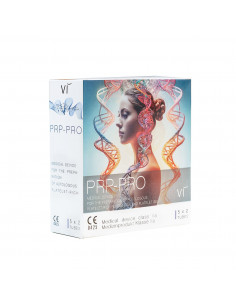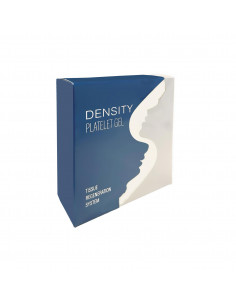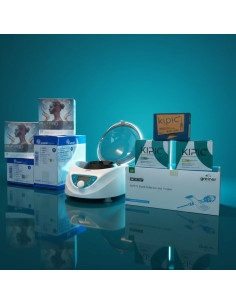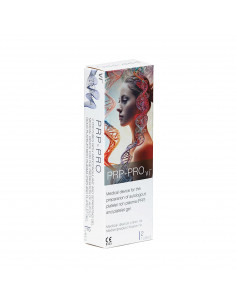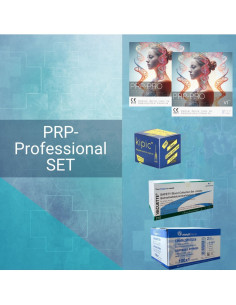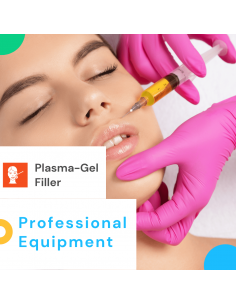PRP
100101
VI PRP-PRO | PRP Tubes – The Revolution in Plasma Treatment
The VI PRP-PRO glass tube offers a modern solution for producing platelet-rich plasma (PRP) and ensures additional stability and reliability in treatments with a wall thickness of 2.4 mm. Developed with innovative technology and EC-certified (0425-MED-004180-00), it guarantees the highest level...
immediately available
€131.00
Vi PRP-PRO Practice Pack - PRP tubes with anticoagulant + separation gel - 9 ml - 40 pcs (4x10)
100105
Practice pack for predictable stock planning: 40 sterile Vi PRP-PRO tubes (4x pack of 10) for PRP workflows in everyday clinical use.
Total contents: 4 packs of 10 tubes (40 pcs)
9 ml vacuum tubes made of borosilicate glass
With sodium citrate anticoagulant and thixotropic separation gel
Class IIa medical device, CE marked according to MDR
For...
immediately available
€518.00
PRF/PRP Glass Tubes without Anticoagulant or Separation Gel | 9 ml | PU 10 tubes
100104
Glass tubes for PRF/PRP applications without anticoagulants. Free of separation gel and additives, suitable for various PRF protocols in all medical fields as well as for PRP procedures.
These tubes contain no gel and no anticoagulants.
Contents: 10 empty PRF/PRP tubes
immediately available
€99.00
Borosilicate tubes with added melatonin (6 pieces per pack)
100335
PRP tubes with melatonin
Designed for professional use in aesthetic PRP protocols for the scalp.
The inner wall is coated with a defined amount of melatonin (0.0232 mg). Made from high-quality borosilicate glass for obtaining platelet-rich plasma (PRP) of optimal quality.
The vacuum system allows for easy blood collection. Addition of an...
immediately available
€65.00
Stainless steel tube holder / test tube rack
100314
Solid stainless-steel tube rack (10 slots)
Surface finish: Glass bead–blasted (matte, low-glare)
Hygiene: Fully autoclavable
Quality: Made in Germany
Sample organisation: Suitable for common tubes used during PRP preparation or blood collection
For lab and practice: Compatible with standard laboratory tubes and blood collection tubes up to...
immediately available
€28.00
Premium stainless steel syringe holder – The elegant organizer for your practice
100315
Quality Made in Germany: The precise workmanship and glass bead blasted finish ensure an elegant, satin-matte appearance.
The non-porous, refined stainless steel surface can be cleaned without leaving any residue, is resistant to disinfectants, and is autoclavable.
Suitable for various syringe types. The robust construction is designed for...
immediately available
€27.50
PRP Starter Set | EBA 200
100400
PRP starter set consisting of:
1x Hettich EBA 200 centrifuge
2x PRP tubes | Vi PRP-Pro PU 10 pcs.
1x KIPIC® needle 25G x 42mm, PU 100 pcs.
1x KIPIC® Mesotherapy Needle 30G 4mm | PU 100 pcs.
1x KIPIC® Mesotherapy Needle 32Gx4mm | PU 100 pcs.
1x Mediware disposable syringes 5ml 3-piece Luer-Lock sterile (PU 100 pcs.)
1x Safety Blood Collection...
immediately available
€1,815.00
PRP Starter Set | SERVOspin Evolve – Complete package for professional users
100451
The PRP Starter Set | SERVOspin Evolve contains all components for precise and reproducible PRP processing.
The set is ideal for medical practices, aesthetic treatments, and laboratories that prefer compact, quiet, and reliable devices.
Contents:
1× SERVOspin Evolve centrifuge 6×15 ml
2× Vi PRP-PRO tubes | 10 pcs.
1× KIPIC® 25G × 42 mm | 100 pcs....
immediately available
€1,199.00
PRP Power Kit Pro - your complete set for professional PRP treatments
100399
This set includes:
1x DUO Centrifuge2x PRP Tubes | Vi PRP-Pro VPE 10 pcs1x KIPIC® Needle 25G x 42mm, VPE 100 pcs1x KIPIC® Mesotherapy Needle 30G 4mm | VPE 100 pcs1x KIPIC® Mesotherapy Needle 32G x 4mm | VPE 100 pcs1x Mediware Disposable Syringes 5ml 3-part Luer-Lock Sterile (VPE 100 pcs)1x Mediware Disposable Syringes 2/3ml 3-part Luer-Lock Sterile (VPE...
immediately available
€2,399.00
PRP Tubes | Vi PRP-PRO (PU 2 pcs.)
1001001
VI PRP-PRO Tubes: Revolutionary PRP Technology for Optimal Results
VI PRP-PRO:
Fast & Effective: Faster treatment process and optimal results
Safe: CE-certified, sterile, and validated for medical use
Versatile: Applicable in various medical fields
Areas of Application:
Orthopedics: Bone regeneration, sports injuries
Surgery: Wound...
immediately available
€36.00
PRP Professional Set
100342
PRP-Professional Set consisting of:
2x Vi PRP-PRO | PRP tubes PU 10 pcs.
1x Kipic 30G 0.30x4mm, PU 100 pcs.
1x Micro-injection KIPIC® needle 25Gx42mm
1x KIPIC® Mesotherapy needle 32G 13mm | PU 100 pcs.
1x Safety blood collection set + Luer adapter 21G green with holder - PU 35 pcs.
1x Disposable syringes 2/3ml 3-piece Luer-Lock sterile (PU 100...
immediately available
€419.00
Plasma Gel Filler - Professional Set
100602
Discover the Plasma Gel Filler Professional Set: Highest quality and precision for aesthetic treatments. Get top results now! 🌟
immediately available
€265.37




